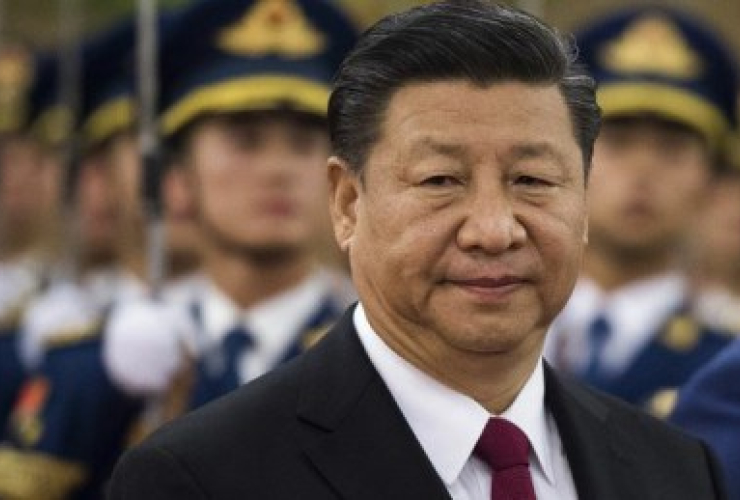OTTAWA — The head of Canada’s intelligence service told the prime minister that he supported the decision to invoke the Emergencies Act last winter, despite his view that nationwide protest lockdowns did not meet the strict definition. of the Canadian security threat service.
Testimony on Monday by the director of Canada’s Security Intelligence Service, David Vigneault, is key to the Public Order Emergency Commission, which is examining the government’s use of the Emergencies Act to disperse protests.
The law identifies a public order emergency as a threat to the security of Canada, as defined in the Canadian Security Intelligence Service Act.
That definition includes espionage or sabotage of Canadian interests, foreign influence, acts of serious violence against persons or property for political, religious or ideological objectives, or the violent overthrow of the Canadian government.
No such threat materialized during the “Freedom Convoy” protests, Vigneault said, although CSIS was investigating some participants in connection with violent extremism.
Still, Vigneault said he was satisfied that a threat to national security had to be interpreted differently in the context of the Emergencies Act after receiving advice from the Justice Department. That advice will not be shared with the public because the government has not given up. attorney-client privilege when it comes to the invocation of the act.
“I think this is the crux of the matter,” Vigneault said during Monday’s hearing. “In the context of the Emergencies Law, there had to be a separate interpretation, based on the limits of that law.”
What people are reading

The secretary of the Privy Council testified last week that the government took a broader interpretation, including threats to Canada’s economic security.
Provincial premiers were likely not told the threat did not meet the strict threshold defined in the CSIS Act when they were asked about the potential emergency declaration, Vigneault said, because provinces do not have access to classified CSIS information. .
Protesters with hundreds of large trucks and other vehicles poured into Ottawa in late January and blocked the city’s streets in what began as a demonstration against the COVID-19 vaccination requirement for cross-border truck drivers.
The director of the Security Intelligence Service of Canada, David Vigneault, supported the invocation of the federal Emergency Act. #cdnpoli #CSIS #emergenciesact
The protest quickly expanded to include dissent against all COVID-19 public health restrictions and liberal government in general, and continued for nearly a month.
Similar protests unfolded in cities across the country, with protesters blocking several busy international border crossings.
Prime Minister Justin Trudeau declared a public order emergency on February 14, the first time the legislation had been used since its creation in 1988.
Vigneault was asked for his opinion before the Emergencies Act was invoked, telling the prime minister he believed it was “required” based on what was happening across the country.
“All of these elements of unpredictability, based on my experience of having been involved in national security issues for quite a few years, led me to believe that regular tools were simply not enough to address the situation,” he said.
The Emergencies Law gave extraordinary powers to governments, banks and the police to create exclusion zones around critical infrastructure, demand the cooperation of towing companies and freeze the bank accounts of people suspected of being involved in the protest. .
Vigneault testified on a public panel Monday with the CSIS deputy director of operations and the executive director of the Integrated Center for Terrorism Assessment, a unit located in the intelligence service.
Investigation Commissioner Judge Paul Rouleau has allowed CSIS to share some testimony and evidence privately with the investigation because the details could jeopardize the agency’s intelligence operations and national security.
Questions about investigative techniques, CSIS informants and any details about CSIS investigations were prohibited during the public hearing, but may have been asked during a closed-door hearing earlier this month.
CSIS produced five threat assessments of the Ottawa convoy protest and similar protests that blocked border crossings, but details of those assessments have been shared privately with the commission and will not be made public.
The intelligence service was not specifically investigating the growing movement of Canadians opposing public health measures, CSIS Deputy Director of Operations Michelle Tessier testified Monday. Rather, she worried that people with more extreme views would use the protest as an opportunity.
“There would be more individuals exploiting that type of movement to recruit individuals, to drive them more towards the extreme view of anti-authoritarian ideology, wanting to use serious violence to kill to bring about change,” Tessier said.
The agency has seen a rise in “anti-authority” rhetoric, even after concerns about public health restrictions subsided as the measures were lifted, he said. Threats against elected politicians are also on the rise.
There were early indications that ideologically motivated extremists were planning to attend the protest, says January 27 briefing material prepared by CSIS.
The notes, which Vigneault said were used to inform Public Security Minister Marco Mendicino, also make it clear that the agency was not aware of “any tangible plot or plan for serious violence.”
The overall threat level in Canada remained at “medium” during the protests, the CSIS told the commission.
The agency’s Feb. 13 assessment said invoking the law would likely “boost” anti-government narratives and likely increase the number of Canadians with extreme anti-government views, a submitted draft threat assessment shows.
CSIS warned that use of the legislation “would lead some to believe that the system (or this government) had failed and that violence is the only solution,” the draft said.
This report from The Canadian Press was first published on November 21, 2022.
